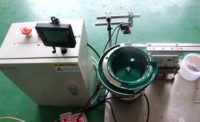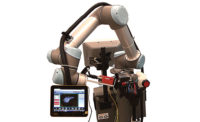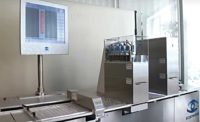Many machine vision projects start with one goal: significantly improve upon the accuracy and repeatability of human inspectors. A few years ago, experienced integrator G2 Technologies Inc. helped an aerospace-industry customer meet this goal by creating a system that automatically and reliably inspects connector pins.
The connector features a series of wires from the male and female side that are interwoven to provide multiple contacts. Its connector pins require a high level of inspection because they are designed for multiple insertions in aerospace craft.
G2 developed an inspection system that uses a state-of-the-art vision camera and diffuse dome lights. These technologies allow the end-user to inspect each connector in less than a minute and detect defects to an accuracy of ±0.005 inch.
The system performs two important types of inspection. First, it verifies the overall length and width of the connector pin. Next, it inspects the pocket in which the wires reside to ensure they are all positioned correctly on the inner diameter, rather than in between the inner and outer diameters.
The grouping criteria changes based on the male and female connectors. Because these two connectors have to mate, the inspection criteria ensures that they will mate and make acceptable electrical contact.
If a defect is found, the system alerts the operator. If the part is dimensionally incorrect or the pockets are too small, the customer pulls the connector from the line. Missing pins are replaced, and any debris in the cavity is removed.
Good parts then proceed to an orientation wheel that repositions them for board-side inspection by a laser line profiler. This is followed by connector-side inspection, cleaning, electrical testing and engraving. Passed connectors receive a date code and move on to packaging. Each failed connector receives a reject code that identifies the station in which it was rejected and is moved to a locked reject bin to ensure that it doesn’t get mixed with good parts.
Craig Borsack, president of G2 Technologies, says his team chose the Linea Mono 8K line-scan GigE camera from Teledyne DALSA because it produces high-resolution images, despite being inexpensive. In this application, the Linea not only quickly acquires and processes images, but also counts the number and condition of wires and checks for debris or foreign objects in the cavity.
The camera acquires images at rates of up to 13 kilohertz and has high responsivity in both the visible and near-infrared wavelengths. Camera cables can be up to 10 meters long. Triggering is programmable and flexible. In addition, the camera offers multiple user coefficient and flat-field correction calibration sets.
“The wires inside the cavity aren’t finished or cut the same way, and the orientation of those wires is different for each one of them,” says Borsack. “[Plus], the reflection off those wires created hot spots, which wouldn’t allow us to identify between the wires because they were too close.”
To solve this problem, G2 installed a filter and two LED DL 194 dome lights from Advanced Illumination. Each light is placed at a 45-degree angle with the camera in the middle to provide the right amount of illumination for inspection. The light comes in a wide range of wavelengths, including a three-channel RGB configuration. It has a rugged, cast-aluminum housing with an outer diameter of 5.25 inches and an inner diameter of 3.1 inches.
“The [inspection] system consistently detects defects and performs accurately across shifts and changes in personnel,” concludes Borsack. “[Both of these] had been issues in the past.”
For more information on line-scan cameras, call 519-886-6000 or visit www.teledynedalsa.com. For more information on dome lights, call 802-688-1191 or visit www.advancedillumination.com.





